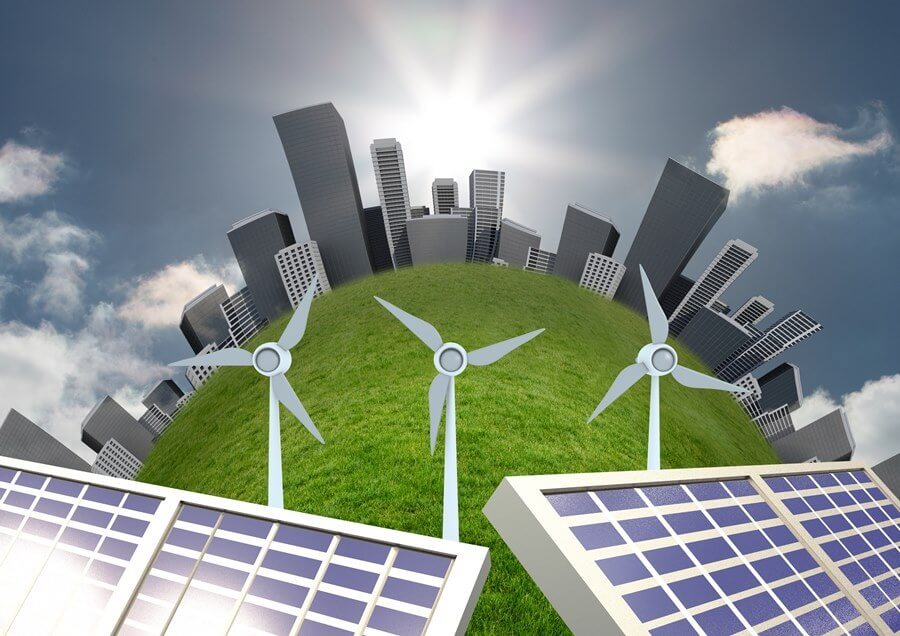Green building materials and technologies

In the quest to build a more sustainable future, the employment of eco-friendly building materials and groundbreaking technologies has become paramount. This exploration into green construction not only addresses environmental challenges but also offers innovative solutions for healthier, more energy-efficient homes and commercial spaces.
This blog post delves into the world of sustainable construction, highlighting the pivotal role of materials and technologies that pave the way for a greener future. From renewable resources to energy-saving innovations, the array of possibilities is expanding, promising a significant impact on how we design and construct the buildings of tomorrow.
Introduction to Sustainable Construction
The term 'green' refers to techniques and uses of materials in construction that are environmentally responsible and resource-efficient. The evolution of building practices has enabled architects and engineers to apply sustainable methods from conception through completion, ensuring the smallest carbon footprint possible.
Sustainable construction not only involves the use of recycled or renewable materials but also incorporates energy-efficient systems and technology that reduce waste and promote a healthier living environment. It represents a holistic approach to building, considering the lifecycle impact of resources used.
Advancements in technology and a growing awareness of environmental issues have propelled sustainable building from a niche market into the mainstream. Today, constructing with green principles is seen not as an alternative but as the best practice.
The focus on sustainability is not merely a trend but a necessary shift to mitigate the impacts of climate change and protect our planet for future generations.
Eco-Friendly Building Materials
One of the core components of sustainable architecture is the selection of environmentally friendly materials. These include products like bamboo, reclaimed wood, and recycled steel or glass. Such materials not only reduce the demand on ecosystems but also decrease construction waste and pollution.
Renewable resources, such as cork and linoleum, are also gaining popularity for their sustainability and durability. These materials are not only green but offer a range of aesthetic options for personalized and stylish designs.
Innovative composites, developed from plant fibers and recycled plastics, present a modern solution that supports the environment while offering the strength and versatility needed for various applications.
Revolutionary Green Technologies
Green technology in construction goes beyond materials, encompassing innovative systems and applications that enhance energy efficiency and sustainability. Solar panels, for instance, have become synonymous with green building, enabling structures to produce their own clean energy.
Other examples include green roofs, which are covered with vegetation to improve insulation, support biodiversity, and manage rainwater. Additionally, sustainable water management systems, such as greywater recycling, allow buildings to reuse water for landscaping and flushing toilets, significantly reducing overall water consumption.
Smart building technology, integrating sensors and IoT devices, optimizes energy use and reduces waste by monitoring and controlling heating, cooling, and lighting systems based on occupancy and preferences.
Benefits of Green Building
Adopting green construction practices brings a multitude of benefits, from reducing energy consumption and lowering operational costs to improving occupant health and productivity. Sustainable buildings often provide better air quality and more natural light, creating a more comfortable and satisfying environment.
Furthermore, green buildings typically have a higher market value, attracting tenants and buyers interested in sustainability and lower utility bills. This value is not only financial but also lies in the contribution to environmental conservation and social responsibility.
At the community level, sustainable construction plays a crucial role in reducing emissions, conserving water, and minimizing strain on local resources. It sets a positive example, encouraging others to consider the long-term impacts of their building choices.
Challenges and Future Directions
Despite the growing acceptance of green building methods, challenges remain. High upfront costs and a lack of awareness or expertise in sustainable construction can be significant barriers to widespread adoption. However, as technology advances and the cost of green materials and systems decreases, these hurdles are becoming less formidable.
The future of sustainable construction is bright, with ongoing research and innovation paving the way for even more efficient and eco-friendly solutions. Emerging materials like self-healing concrete and energy-generating windows are just a few examples of what's on the horizon.
As global awareness of environmental issues continues to rise, the demand for green building will only increase. It is an ever-evolving field, requiring continuous learning and adaptation from professionals and advocates alike.
Conclusion
Green building materials and technologies represent crucial steps toward a sustainable future, offering innovative solutions that benefit not only the environment but also the health and well-being of occupants. By embracing these eco-friendly practices, we can significantly reduce our ecological footprint, paving the way for a greener, more resilient world. As the construction industry continues to evolve, it has the potential to lead the charge in environmental stewardship, setting new standards for how we live, work, and interact with our planet.
This deep dive into the realm of sustainable construction underscores the importance of integrating green materials and technologies into our buildings. As we look to the future, it's clear that the path to sustainability is both a challenge and an opportunity—an opportunity to redefine our relationship with the environment and to build a legacy of responsibility and care for generations to come.

Related